
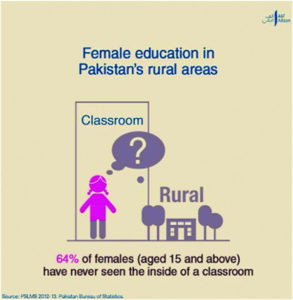
Women’s education
Sir,
Education is a human right and is central to development, social progress and human freedom. Denial of access to basic education to girls and women is not only a matter of gender discrimination, it is bad economics and bad social policy.
Pakistan lies in the zone of the world which holds 75% of the world’s illiterate population, a majority of whom are women. In the education sector, the country has been faced with a dilemma since its independence. After 57 years of independence, since 1947, the estimated literacy rate came to just 51.13%. Roughly, on average, the literacy rate in Pakistan has been growing at the rate of 1% or even less per annum.
On the other hand, the total number of illiterate people in Pakistan has almost doubled in absolute numbers from 28 million in 1972 to 48 million at present. It is alarming to note that the share of illiterate women has been increasing over the years, from 52% of 28 million to over 60% of 48 million today.
Of the 149 million Pakistanis, unfortunately, of the illiterate population in Pakistan, 41% are males and 65% are females. Independent sources indicate that the current literacy rate projected by the Government of Pakistan is too high as this percentage includes people who can merely sign their names. They see the literacy rate by its real definition are being no higher than 26%.
The female literacy rate, particularly among rural women, is the lowest in the world and educational attainment of girls is far below that of boys. It is unfortunate that the education of women is not considered a means for social change or a process by which they can learn to question, think and become agents of change.
Pakistan ranks 144th out of 175 countries in the human development rating. Statistics indicate there has been under-investment in human capital. The situation is particularly alarming for women and those living in rural areas. The government expenditure on education remains only 1.7% of GDP (Economic Survey of Pakistan, 2002-2003).
East Asia built up its human capital through major public and private investments in education. For instance, in 1960, Pakistan was spending only about 1% of its GNP of public expenditure on education while the Republic of Korea was spending twice as much and Malaysia and Singapore three times as much. The cumulative benefits of such major investments in human capital have become increasingly evident with the passage of time.
Starting in 1955, each five-year plan and all 57 years of planned development, participation of women in national development has been a major policy concern for all governments. Despite policy commitments, the educational status of women in Pakistan continues to be low.
The Government of Pakistan has officially endorsed a global mandate on gender equity for advancing the concept of “gender mainstreaming” which promotes integration of gender-sensitive policy prescriptions into national development policies and programs at all levels.
The Constitution of Islamic Republic of Pakistan provides for equality of rights for all, regardless of gender and includes special provisions to protect the rights of children. It also entails removing illiteracy and providing free and compulsory secondary education within a minimum possible period.
Despite the government’s international and national commitments and the participatory role of multilateral and bilateral development partners towards the promotion of gender equity and equality in education, statistics indicate that targets have remained unachieved except in some pockets of progress.
In the last decade of the 20th century, the overall performance in the education sector was disappointing. The Net Enrollment Rate declined from 46% to 44%, Gross Enrollment Rate from 73% to 71%, rural-urban disparity in GER widened and the number of illiterates has increased from 36 million in 1961 to 47 million in 1998.
The gender gap is still quite high as the percentage of literate males (59%) is higher than literate females (35.5%). Therefore, attention should be given to gender and education in Pakistan with an affirmative plan of action for girl’s education both at the policy and school levels.
Ayida Anjum,
via email.
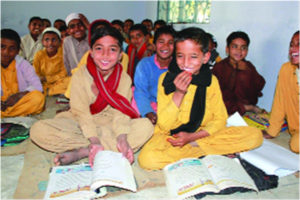
https://thefridaytimes.com/03-Apr-2024/lhc-judges-also-receive-threatening-letters
Khairpur school
Sir,
Village Kamal Faqir Lashari is located in district of ex-chief minister of Sindh Syed Qaim Ali Shah. It is near Sobhodero and itself a UC as well. Lots of educational institutions opened in Khairpur city but unfortunately other towns and villages were ignored. The Pakistan Peoples Party has been ruling here for 10 years.
According to the constitution, an education is the fundamental right of every citizen of Pakistan. The Sindh government criticizes the Punjab government for only spending on metro buses and infrastructure but what has the Sindh government done? The primary school in village Kamal Faqir Lashari has no basic facility but has more than 150 students who come here regularly to try to make a future. Most of them can’t afford to go to cities nearer by. Their parents can’t spend on a private education because they are mostly labourers.
The situation is so abysmal that there is only one teacher for 150 students. I appeal to the Sindh government, the chief justice of the Sindh High Court to please take action.
Mir Taqi Abbas Talpur,
Khairpur.
Bill v. will
Sir,
Minister for Climate Change Zahid Hamid has said the Pakistan Climate Change Bill, 2017 has been passed to mitigate environmental threats and prevent future disasters. I think, there is more need for will and commitment than bills and resolutions in the assemblies. There are already several laws on the environment and climate but they have not been implemented in true letter and spirit.
The Khyber-Pakhtunkhwa government has set a good example by launching the ‘Green Khyber-Pakhtunkhwa’ campaign with the aim to plant 8 million trees across the province. The local community is taking part to help with reforestation with the incentive of job opportunities. For climate change mitigation, forests are an important part of the global carbon cycle. By removing greenhouse gases from the air, forests function as terrestrial carbon sinks, meaning they store large amounts of carbon. Pakistan is likely to produce four times more greenhouse gas emissions by 2030 and would need $40 billion to mitigate the effects.
The country is facing many adverse climate change impacts in the form of floods, melting glaciers, drought, heat waves, sea intrusion and most recently smog. Furthermore, high carbon emission intensity power sources are being used by the government, such as conventional fossil fuels like oil, coal and natural gas, for setting up power houses. There is an immense need to replace them with low-carbon power sources like solar and wind power.
Clean, sustainable and environment-friendly energy should be a first priority. The main purpose of the Pakistan Climate Change Bill is to give Pakistan access global climate finance more energetically. But first the government must set its policies, priorities, and targets in a crystal clear way.
Engr. Mansoor Ahmed,
Faisalabad.
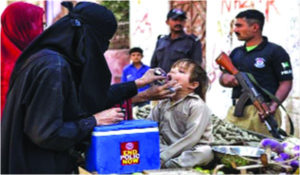
Polio workers
Sir,
I recently met a woman called Amina who works as a polio vaccinator in Rawalpindi. She is in her 30s, has small children and a husband who does not work. She earns two thousand rupees per house, which is the going rate for one task such as laundry, at a housing society, during off-season days. She told me about her training as a vaccinator, which was rigorous. But then she said that they only paid her seven thousand rupees as a monthly salary for a full day’s work. There is no way for me to independently verify this, of course. But what was certain to me was that she was not paid enough to be motivated.
Furthermore, she told me of one incident in which she asked a woman to give her a glass of water on a hot day and was told to get lost. “Baji, itna dil dukha,” she said to me. She cursed that woman and went back into the street. Fortunately, a young man next door had seen the scene unfold and called for soft drinks for the entire team.
She said that she hailed from Dera Ismail Khan where they were afraid to work because it was dangerous and people had been killed.
I think women like her are doing a tremendous job, as is the government. It is certainly a service that should be financially rewarded in a way that really incentivises their work.
Ahmad,
Islamabad.
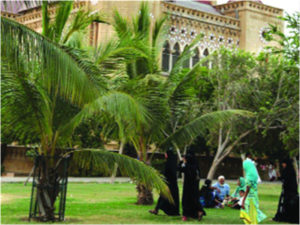
Amenity plots
Sir,
The laws in Karachi that govern amenity spaces are: KDA Order 1957 and its Section 52-A says, “No amenity plot reserved for the purpose (mentioned in clause-I) shall be converted to or utilized for any other purpose.”
The Karachi Building & Town Planning Regulations, 2002 also apply. They say in Regulation 18-4.1: “No amenity plot reserved for the specific purposes shall be converted or utilised for any other purpose.”
In December 2011, Shehri-CBE, a non-profit that has engaged on Karachi’s urban issues, completed three years of research into Karachi’s parks. The work is available online on Slideshare: https://www.slideshare.net/shehri_cbe/parks-and-amenity-spaces-of-karachi-vol-1. Its principal researcher was Naila Ahmed. She covered Karachi’s 18 towns, five cantonments and special parks such as Kidney Hill, Gutter Baghicha in a mammoth sprawling three-volume series. She compared satellite images of amenity plots to show how they had disappeared and mapped each town’s parks. Shehri found that over the past five decades, the KDA and CDGK have been “arbitrarily amending, subdividing and changing land-use of many plots, all in violation of the applicable laws’. As far as my limited understanding of this goes, this means, quite simply that parks have been marked in maps for the city as ‘amenity’ plots. And the laws say that you cannot change this description for them, by say making them commercial plots.
The late Ardeshir Cowasjee wrote in June 2011, that “The governments and political parties of the day seem to have abdicated their public duty to protect amenity spaces and have joined in the loot!”
It is a sad state of affairs and one hopes that the city government will do something about the parks.
Fatima Sohail,
Karachi.
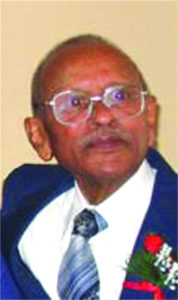
RIP, Albert Godin
Sir,
Born to Robert and Eveline Godin in Peshawar, Pakistan on March 27, 1929 our dad lived life to the fullest whether pursuing the love of his life, Clare Anne D’Cruz as a young man, savoring chocolates, enjoying a peg or two of whiskey, hunting, working tirelessly to put food on the table, helping people, making a variety of exquisite wines from all types of fruits and vegetables, traveling the world or talking passionately about politics and the people of his beloved homeland Pakistan and especially his birthplace Peshawar. He was a true patriot and a son of the soil.
He loved his country and its people unconditionally, especially the people of Peshawar and the NWFP as it was known then. He was fluent in Pashto, proud to call himself a “Peshawari” and wanted to preserve its heritage, legacy and character in the changing scenarios that exists in present-day Pakistan. Many people have had the pleasure of reading some of his writings on the history of the region, which were eloquent and enlightening.
On his last visit to Peshawar in 2013 before his final departure for Canada, I (Christopher) had the pleasure of accompanying him on a visit and as we sat in the car in front of his ancestral home, A. Godin & Co, on Arbab Road, I think he reminisced in his mind about his time growing up there. We also visited the Christian cemetery where his parents, and niece Cecilia are laid to rest and it pained him to see the deterioration and disrepair of a place he held sacred. Interestingly, many years earlier he had scaled the walls of the Pakistan Air Force Cemetery in Peshawar in a restricted area to pay respects to his siblings, Cecilia and Gilbert.
Well-organized and a creature of habit, he would create a personalized Christmas card every year to be sent to family and friends. It included a perspective from his point of view of the year gone by. He was proud of his children and grandchildren and even though he never expressed it openly, he showed it in some way or the other. I guess we will now look back and appreciate the finer points of his character and demeanor.
In the final days of his life, even though he was delusional at times or hallucinated due to the inability of his body to process oxygen, he told us that he would like a whiskey. We thought that it was just another figment of his imagination but the next day he reminded us he wanted one indeed. We immediately went to the liquor store and got a mickey of Johnnie Walker Black and made up a drink. While sipping the drink through a straw, he had a smile on his face and the satisfaction of enjoying one of the pleasures of his life gone by. That smile will stay with us for the rest of our lives.
Even though he exhibited a hard exterior, he was a softie at heart and was always ready to help friends and family without question. Because of his integrity, sincerity and sense of justice, he was widely respected by his many friends and acquaintances, young and old.
After a valiant fight with his infliction, our dad passed away on Saturday March 18, 2017 at the McCall Centre for Continuing Care, Toronto, Canada, nine days shy of his 88th birthday.
Husband to our mother and loving wife, Clare Anne Godin, for 62 plus years, the person who was the apple of his eye and whom he adored till the end, he is survived by his children and their spouses/partners Louisa and Ian Desouza, Christopher and Philomena, Maria and Nagesh Peri. His grandchildren Brenton and Gerard Godin, Namrata and Nikhil Peri. His brother Norbert survives him. He was predeceased by his parents Robert and Eveline, brother Hubert and sister Roberta Fernandes. And most of all, Albert J Godin has left the beloved people of Peshawar and Rawalpindi, Pakistan, where he left his heart after moving to Canada for the final time in 2013.
Louisa, Christopher, Maria
& the Godin family,
Toronto.

